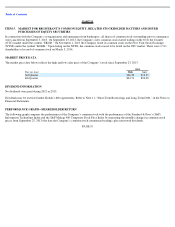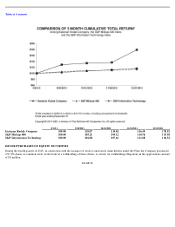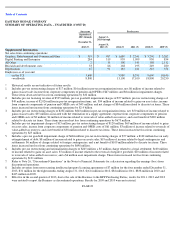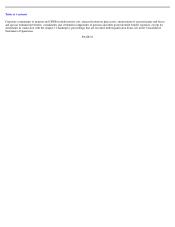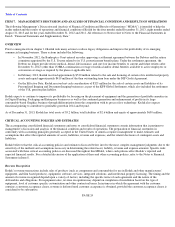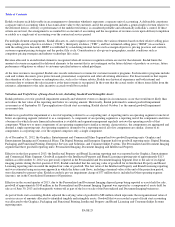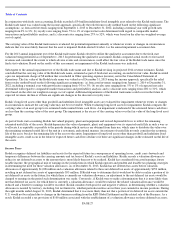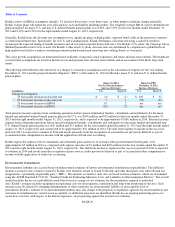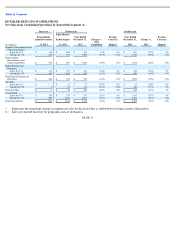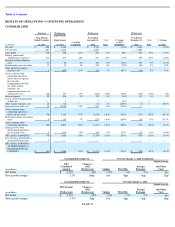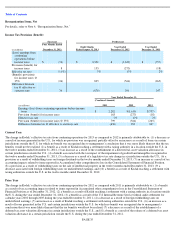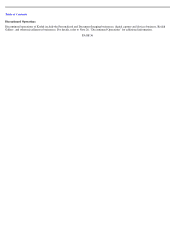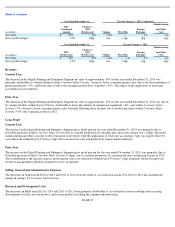Kodak 2013 Annual Report Download - page 31
Download and view the complete annual report
Please find page 31 of the 2013 Kodak annual report below. You can navigate through the pages in the report by either clicking on the pages listed below, or by using the keyword search tool below to find specific information within the annual report.
Table of Contents
Kodak reviews its EROA assumption annually. To facilitate this review, every three years, or when market conditions change materially,
Kodak’s larger plans will undertake asset allocation or asset and liability modeling studies. The weighted average EROA used to determine net
pension expense for major U.S. and non-U.S. defined benefit pension plans was 8.20% and 5.35% for the four months ended December 31,
2013 and 8.12% and 6.54% for the eight months ended August 31, 2013, respectively.
Generally, Kodak bases the discount rate assumption for its significant plans on high quality corporate bond yields in the respective countries
as of the measurement date. Specifically, for its U.S. and Canadian plans, Kodak determines a discount rate using a cash flow model to
incorporate the expected timing of benefit payments and an AA-rated corporate bond yield curve. For Kodak’
s U.S. plans, the Citigroup Above
Median Pension Discount Curve is used. For Kodak’s other non-U.S. plans, discount rates are determined by comparison to published local
high quality bond yields or indices considering estimated plan duration and removing any outlying bonds, as warranted.
The salary growth assumptions are determined based on Kodak’s long-term actual experience and future and near-
term outlook. The healthcare
cost trend rate assumptions are based on historical cost and payment data, the near-term outlook and an assessment of the likely long-term
trends.
The following table illustrates the sensitivity to a change to certain key assumptions used in the calculation of expense for the year ending
December 31, 2014 and the projected benefit obligation (“PBO”) at December 31, 2013 for Kodak’s major U.S. and non-U.S. defined benefit
pension plans:
Total pension (income) expense from continuing operations before special termination benefits, curtailments and settlements for the major
funded and unfunded defined benefit pension plans in the U.S. was $(48) million and $25 million for the four months ended December 31,
2013 and the eight months ended August 31, 2013, respectively, and is expected to be approximately $(100) million in 2014. Pension (income)
expense from continuing operations before special termination benefits, curtailments and settlements for the major funded and unfunded non-
U.S. defined benefit pension plans was $(2) million and $17 million for the four months ended December 31, 2013 and the eight months ended
August 31, 2013, respectively and is projected to be approximately $(5) million in 2014. The shift from expense to income in the successor
period of 2013 is expected to continue in 2014 and results primarily from the recognition of actuarial losses previously deferred as part of
accumulated other comprehensive income with the application of fresh start accounting.
Kodak expects the expense, before curtailment and settlement gains and losses of its major other postretirement benefit plans, to be
approximately $5 million in 2014 as compared with expense (income) of $1 million and $(69) million for the four months ended December 31,
2013 and the eight months ended August 31, 2013, respectively. The shift from income to expense in the successor period of 2013 is expected
to continue in 2014 and results from the recognition of prior service credits previously deferred as part of accumulated other comprehensive
income with the application of fresh start accounting.
Environmental Commitments
Environmental liabilities are accrued based on undiscounted estimates of known environmental remediation responsibilities. The liabilities
include accruals for sites owned or leased by Kodak, sites formerly owned or leased by Kodak, and other third-party sites where Kodak was
designated as a potentially responsible party (“PRP”). The amounts accrued for such sites are based on these estimates, which are determined
using the ASTM Standard E 2137-06, “Standard Guide for Estimating Monetary Costs and Liabilities for Environmental Matters.” The overall
method includes the use of a probabilistic model that forecasts a range of cost estimates for the remediation required at individual
sites. Kodak’s estimate includes equipment and operating costs for investigations, remediation and long-term monitoring of the sites. Such
estimates may be affected by changing determinations of what constitutes an environmental liability or an acceptable level of
remediation. Kodak’s estimate of its environmental liabilities may also change if the proposals to regulatory agencies for desired methods and
outcomes of remediation are viewed as not acceptable, or additional exposures are identified. Kodak has an ongoing monitoring process to
assess how activities, with respect to the known exposures, are progressing against the accrued cost estimates.
PAGE 29
(in millions)
Impact on 2014
Pre-Tax Pension Expense
Increase (Decrease)
Impact on PBO
December 31, 2013
Increase (Decrease)
U.S.
Non
-
U.S.
U.S.
Non
-
U.S.
Change in assumption:
25 basis point decrease in discount rate
$
(6
)
$
(1
)
$
103
$
31
25 basis point increase in discount rate
5
1
(99
)
(29
)
25 basis point decrease in EROA
10
2
n/a
n/a
25 basis point increase in EROA
(10
)
(2
)
n/a
n/a


